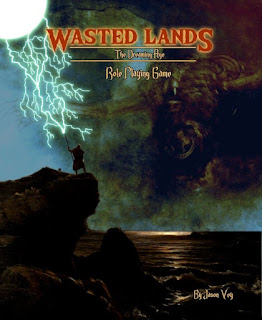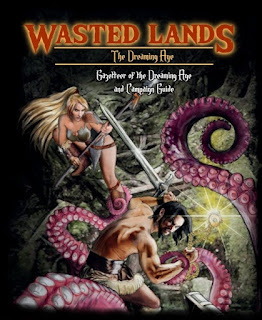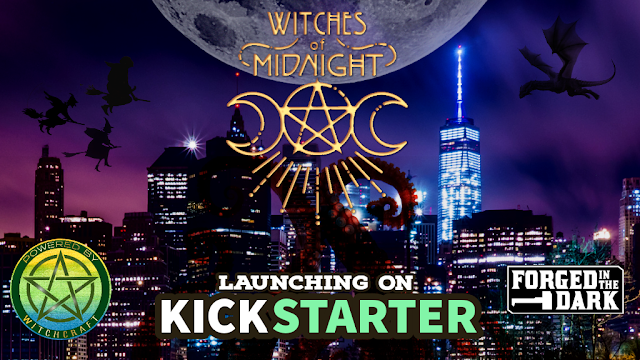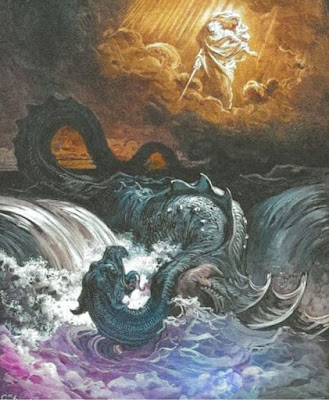Been spending a lot of time with Gods and monsters over the last few weeks. Today I wanted to continue that idea with some of the creatures in between. Also, I want to talk more about using monsters like these in the WASTED LANDS and NIGHT SHIFT RPGs.
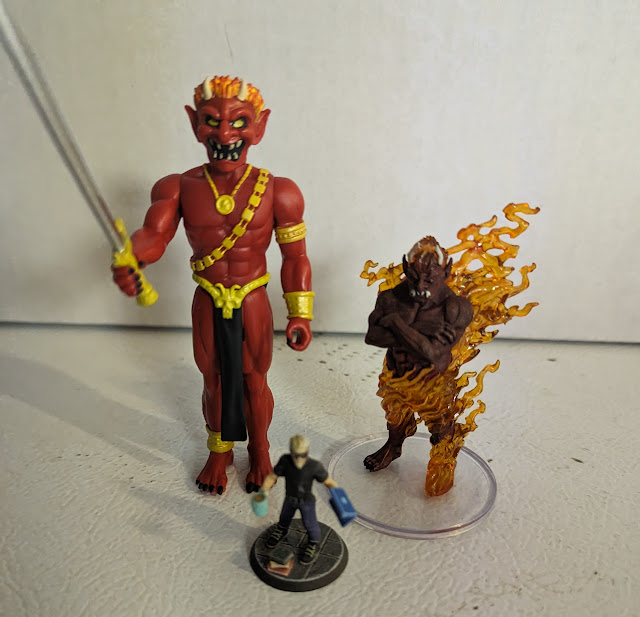 |
| Your humble author surrounded by Shayṭān and Ifrit |
Shayṭān and Ifrit
The wonderful thing about O.G.R.E.S. as presented in the WASTED LANDS and NIGHT SHIFT rules is how flexible it can be. Many monsters are simplified down to basic concepts. A demon for example is give some basic power levels and then a number of powers that can be added or swapped out for nearly infinite variety. Even the name "demon" is flexible.
Here I think old-school players (and Game Masters) will recognize the foundations of many monsters and fans of modern horror RPGs will recognize the flexibility baked into the system.
While this means there is no great need for multiple Bestiaries, there is still utility in spelling some details out for players that need something quick.
Enter the Shayṭān.
I have been spending a lot of time going over the myths and legends of the world. They are all quite fascinating really, and while my love for the original AD&D Monster Manual knows no equal, one thing is clear, that the monsters depicted within pale in comparison to the monsters of myth. This is not really a slight. Space in the MM was limited, and there had to be a game focus.
Take the Effriti from the Monster Manual and to a lesser degree, the one from the D&D Expert Set. I mention the Expert set specifically because it's entry for Effriti was similar, but different enough, from the Monster Manual to make look into the creature more. The tantalizing and (in my mind) poorly explained "Lesser" also sent me out to explore more.
These creatures are interesting, something of a cross between a devil and a fire elemental. Interesting enough to be featured as the cover of the AD&D Dungeon Master's Guide. ut the Ifrit of myth are more interesting still.
There is also no way I can do them justice here, but I would love to take a start at it.
Shayṭān
The Shayṭān are a class of spirits corrupted by the Deeper Dark. They are, or were, predominantly elemental spirits like the Ifrit, Jinn, and Marid, but some are lesser spirits like the Qareen, and others still are greater spirits like Iblis.
In their corruption, they have become similar to demons, and many scholars will conflate the two. Indeed their methods and their purposes are also very similar.
Like the wind, Shayṭān will most often be invisible and intangible but can appear as various mundane creatures. The greatest power of the Shayṭān is to form bodies out of the base elements (fire, air, earth, water) to interact with humans, whom they tempt away from goodness. For example, the Ifrit are the Shayṭān of fire.
The typical Ifrit is a "Rank III demon," according to scholars. It has the following differences, it can only gate in lesser Shayṭān, not other demons. They are harmed by celestials, supernatural attacks, and Chosen Ones (NIGHT SHIFT).
Iblis
Iblis appears as an Ifrit of the largest size, but he can also appear as an angel/celestial or as a normal human. He is the ruler of all Shayṭān.
No. Appearing: Unique
DV: 0
Move: 30ft. Fly: 60ft.
Vitality Dice: 22 (180 Vitality Points)
Special: 4 attacks (2 claws, bite, 1 great sword), Shayṭān abilities, Summon Rank I shayṭān 100%, Summon Rank II shayṭān 85%, Summon Rank III shayṭān 75%, Summon Rank IV shayṭān 60%, Fear gaze, spells, +3 or better weapon to hit, regeneration (4 vitality/round), see in darkness, telepathy 200 ft.
Iblis, sometimes referred to as the Great Duke, the Enemy, or even just The Shayṭān, is the ruler of all shayṭān. His preferred form is that of a normal man, sometimes in the guise of a priest, pilgrim or other holy man. He can also appear as an 18' ifrit surrounded by flames. He has a third form, that of an angelic being that some claim is his original form before he was corrupted.
Iblis is very knowledgeable about magic and there is no spell that he does not know or have access to. Sorcerers often seek him out to learn secret lore, but the summoning of Iblis is a secret itself and to do so incorrectly invites his wrath.
Use in the Wasted Lands
In this game, Iblis and the Shayṭān are new to the world and are seeking out ways to control the minds, and souls, of the humans left here after the Old Ones have departed.
Use in NIGHT SHIFT
Is this the same Iblis as the one from The Dreaming Age? Iblis himself seems to think so but plenty of scholars and occult philosophers point out that we know when he began to appear in myth and texts and say it is unlikely, save that this Iblis occupies the same concept as the Iblis before. Or they are indeed one and the same
Use in Old-School Games (OSR, Dungeons & Dragons)
Iblis is on par with the powerful Arch-Dukes of Hell. In fact he is their rival in many things. Iblis considers the Arch Dukes to be "lesser copies" of himself and the Lords of Hell feel Iblis should be brought to heel as a renegade member of their ranks. Their multitude of similarities only heighten the minor differences they have.
--
Please don't forget to sign up for the WASTED LANDS Kickstarter beginning tomorrow!




